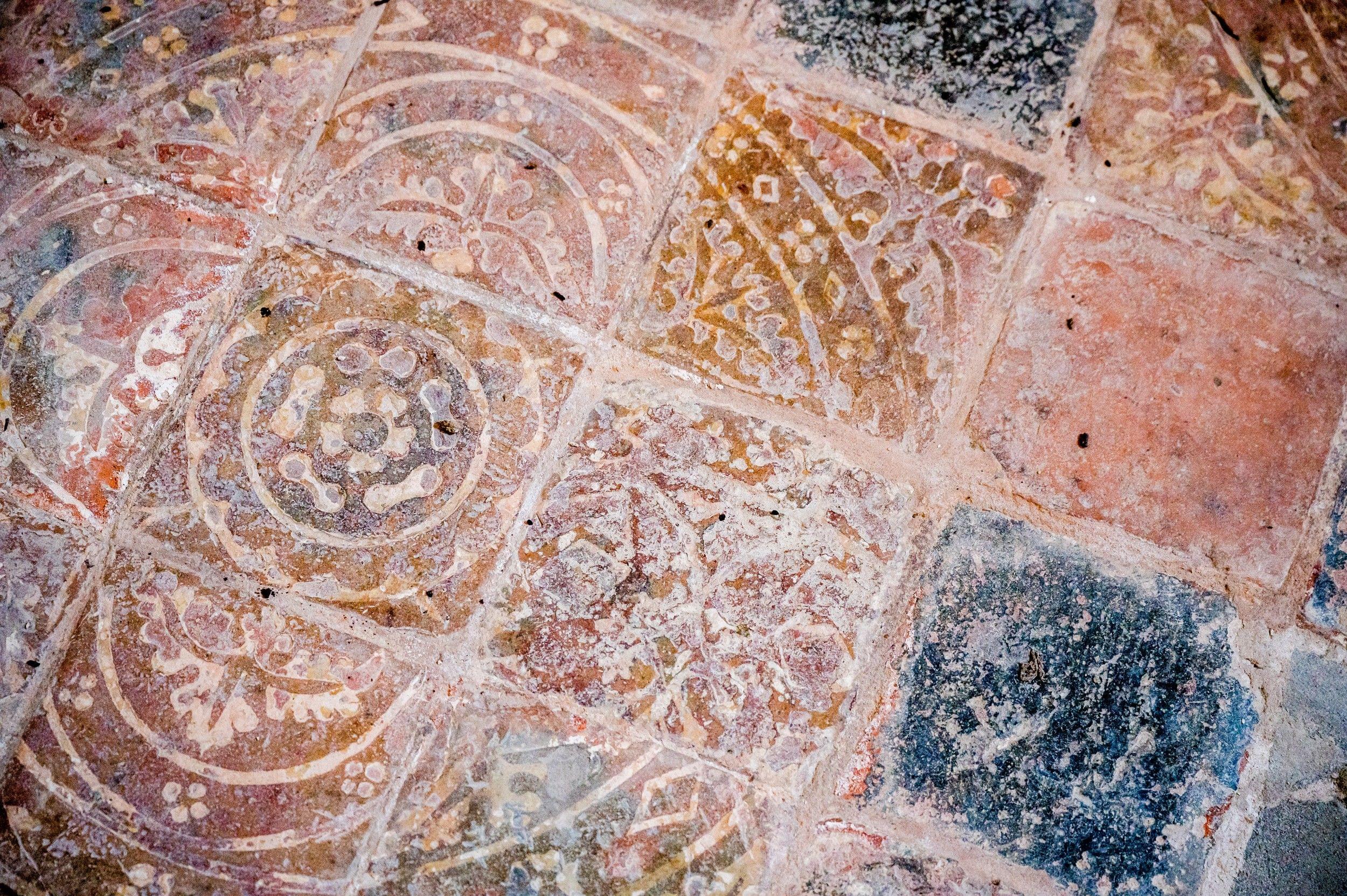St Mary the Virgin
Ware, Hertfordshire
St Mary the Virgin in Ware is a witness to hundreds of years of prayer and worship.

This Early English style church is built of Kentish Ragstone, with slate roofs.
Ware, Hertfordshire
The spire was added in 1859, is a broach style and is about 95 feet tall. It contains just one bell, cast at the famous Whitechapel Foundry in 1859 and is only used when a new vicar is licensed.
To the south west corner, there is an enclosed porch which is only used as a fire escape these days. Next to this are the steps leading down to the boiler room which is located under the south west corner. The church is accessed via the tower. Originally the tower space or porch was open on three sides but in 1986 it was enclosed, the northern side being completely blocked in and the east and west sides being glazed. The original font now stands in this area. Originally it was at the west end of the nave and later at the east end of the north aisle. It features small fleur de lays. From the base of the tower the church is accessed by a poorly lit porch mirroring the one on the south side. There is a door to access the upper floors in the tower.
The area at the west end of the church was cleared of pews in 1977 to create a fellowship area which houses the welcome desk, small kitchenette, store cupboard and refreshment area. Originally the organ was on a gallery at this end of the church but was replaced in 1880. This area was carpeted at the time of the reordering works. The west window consists of three stepped lancets, surrounding the windows are shafts with rings. The window was originally clear but now consists of diamond panels made up of stained glass, dating from 1884, blown out of the east window and 1924 glass, from the east window of the north aisle, when the church was damaged by a bomb in 1940.
There is a main nave and two side aisles, with pews arranged in blocks fixed to suspended wooden floors. The flooring in the aisles is now of green and cream Marley tiles, which were laid in the early 70’s over the original flooring which was either tile or flagstones. The pews are the original ones, made of pine stained to appear like oak. The roof is a very simple hammer beam one, with the terminus resting on Bath stone corbels.
To the left of the chancel arch at the east end of the north aisle are text panels of the Ten Commandments, the Lord’s Prayer and the Creed. All of these panels date from 1858 and where relocated to their current position when the chancel was remodelled in 1920. To the right of the arch is the pulpit which is believed to pre date the church and originally was on the opposite side of the arch. The chancel is reached via three steps (currently hidden under the dais). The floor is tiled in marble and contains fixed light oak choir stalls which were installed in memory of Walter French, churchwarden in 1935.
The reredos and the panelling date from 1920 and form part of Christ Church’s memorial to the dead from the parish of the First World War. The communion rail was installed in 1928. The chancel walls have various plaques and memorial tablets to the war dead, the church’s benefactor Robert Hanbury, various family members and past vicars. The vestry is reached via a door on your right, was extended in 1958 and now houses the parish offices. The East window is similar to the west in design other than the lancets are of equal height. Above the window is a round window divided into six parts containing its original glass form 1884, which surprisingly survived the bomb blast. The three lancets contain glass by Martin Travers, being one of his last works dining before it was dedicated in 1948. The window shows the scenes from the Crucifixion to the Ascension and is dedicated to those who died in World War Two. The organ was built by James Bishop and has a big brother in Sydney Opera house. Its only modification was the electrification of the bellows in 1945.
Ware, Hertfordshire
St Mary the Virgin in Ware is a witness to hundreds of years of prayer and worship.
Hertford, Hertfordshire
The origin and date of St Andrew’s is not certain but some authorities believe it is the original church of Hertford, the parish being created in 860 AD.
Stanstead Abbotts, Hertfordshire
A local treasure unchanged for 200 years.